Growing yarrow is one of the easiest ways to add beauty, resilience, and biodiversity to your garden. This hardy perennial, scientifically known as Achillea millefolium, is prized for its feathery foliage and clusters of small, daisy-like flowers that bloom in shades of white, pink, yellow, and red.
Also called common yarrow, milfoil, or soldier’s woundwort, it belongs to the Asteraceae family and is native to temperate regions across North America, Europe, and Asia. Yarrow is well-adapted to full sun and tolerates a wide range of soil conditions, making it a favorite among home gardeners.
Yarrow is valued not only for its ornamental appeal but also for its many practical uses. It attracts pollinators like bees and butterflies, improves soil health, and serves as a natural ground cover that suppresses weeds. With its deep roots, yarrow helps stabilize soil and prevent erosion, making it an excellent choice for wildflower meadows and low-maintenance landscapes.
Historically, it has been used in herbal medicine for centuries, particularly for treating wounds, fevers, and digestive ailments. Indigenous cultures in North America relied on yarrow for its healing properties. It was even used by soldiers to stop bleeding in battle, earning it the nickname “soldier’s woundwort.”
As a perennial, yarrow reliably returns each year in zones 3-9, though in warmer climates, it may remain evergreen, while in colder regions, it dies back in winter before regrowing in spring. It self-seeds readily and spreads through underground rhizomes, forming dense, mat-like clumps over time.
Yarrow is well-suited to dry, nutrient-poor soils where other plants struggle, and it blooms from late spring through fall, providing long-lasting color and continuous nectar for pollinators throughout the growing season.
The Beauty and Versatility of Yarrow
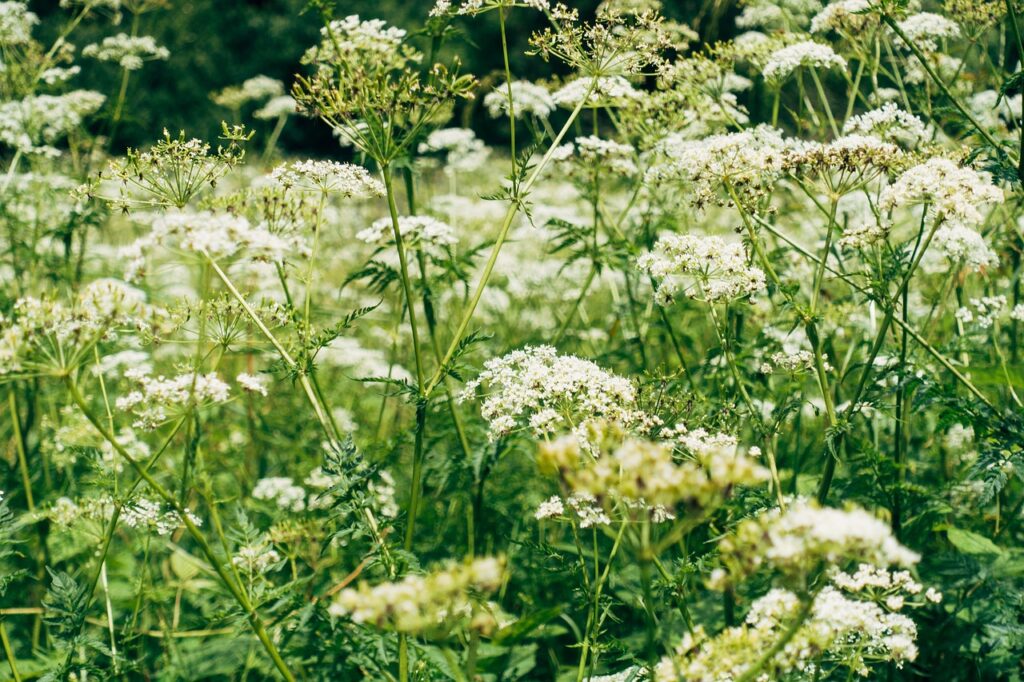
Yarrow (Achillea millefolium) is a striking, feathery perennial known for its dense clusters of tiny, disc-shaped flowers that bloom in a variety of colors. While wild yarrow is most commonly white, cultivated varieties offer shades of pink, red, yellow, and even deep orange.
Each flower cluster, called an umbel, can reach 2 to 6 inches across, creating a soft, cloud-like appearance atop sturdy stems. The plant itself typically grows between 1 to 3 feet tall, with a spread of about 1 to 2 feet, though some subspecies can grow taller under ideal conditions.
Its fern-like, aromatic foliage adds texture to the garden and remains attractive even when the plant is not in bloom.
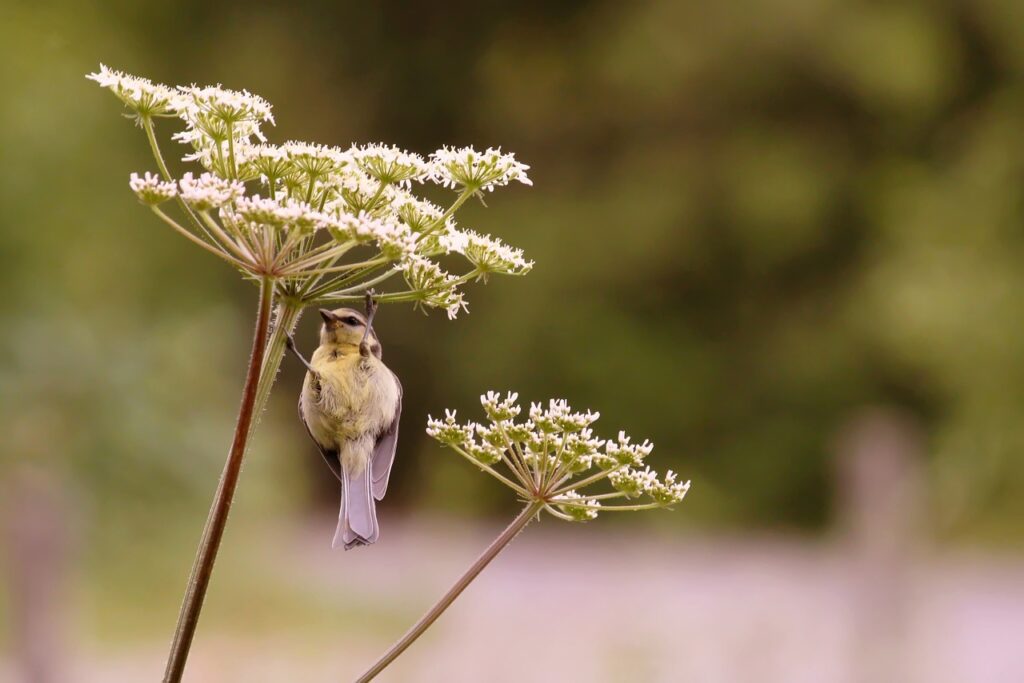
Yarrow is incredibly adaptable and thrives in a wide range of garden settings. It’s a popular choice for cottage gardens, wildflower meadows, pollinator gardens, and xeriscaping due to its drought tolerance.
It also works well in borders, rock gardens, and as a ground cover in sunny, well-drained areas. Because of its ability to spread and naturalize, yarrow is often used to stabilize slopes and improve soil health.
Popular Subspecies of Yarrow
Several naturally occurring subspecies of Achillea millefolium have distinct characteristics that make them well-suited to different climates and garden styles. Here are some of the most commonly grown subspecies:
Common Yarrow (Achillea millefolium subsp. millefolium)
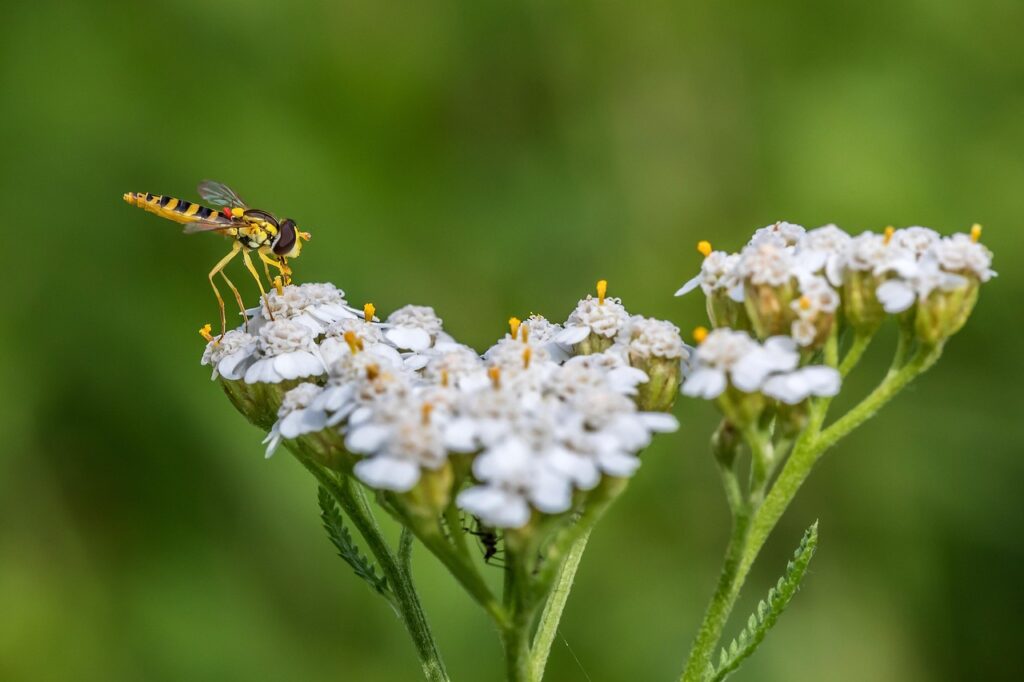
This is the most widespread subspecies, native to Europe and Asia but now naturalized in North America. It typically grows 1 to 3 feet tall and features white to pale pink flowers. It spreads aggressively through rhizomes, making it a common sight along roadsides and in meadows.
Boreal Yarrow (Achillea millefolium subsp. borealis)
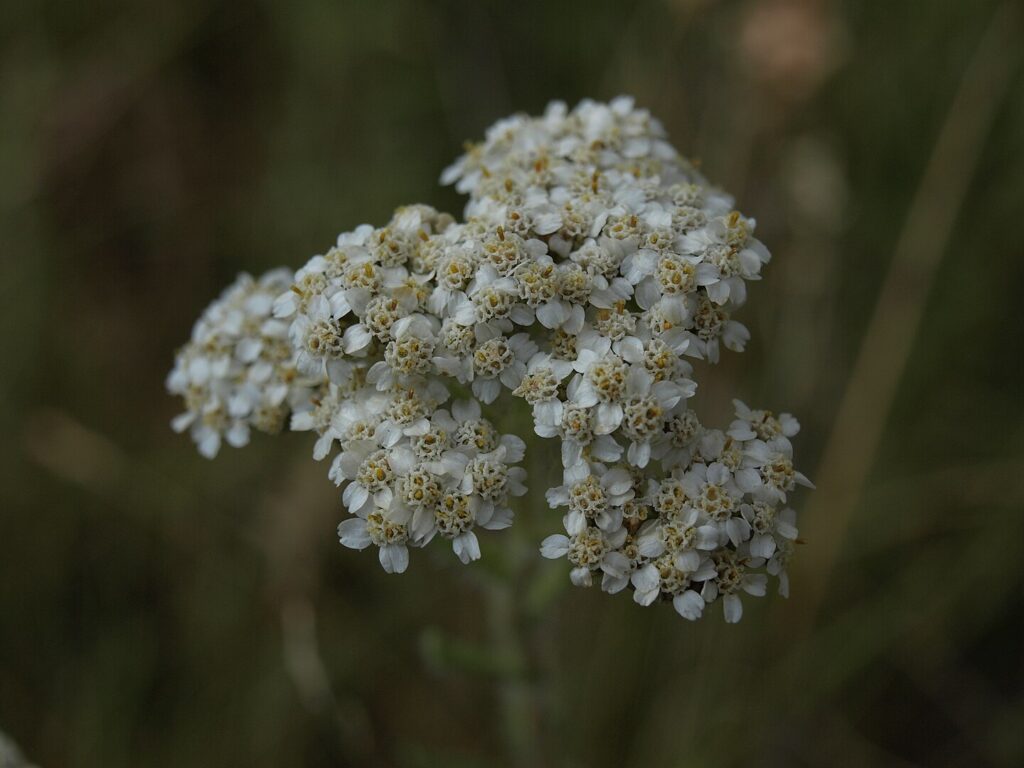
Native to northern North America, this cold-hardy subspecies is commonly found in Canada and the northern United States. It has a compact growth habit and usually produces white or pale yellow flowers. It thrives in alpine and boreal regions.
Western Yarrow (Achillea millefolium subsp. occidentalis)

Found in western North America, this subspecies has a more upright growth habit and typically reaches around 2 feet tall. It produces white to pink flowers and is well-adapted to dry, arid environments.
Woolly Yarrow (Achillea millefolium subsp. lanulosa)
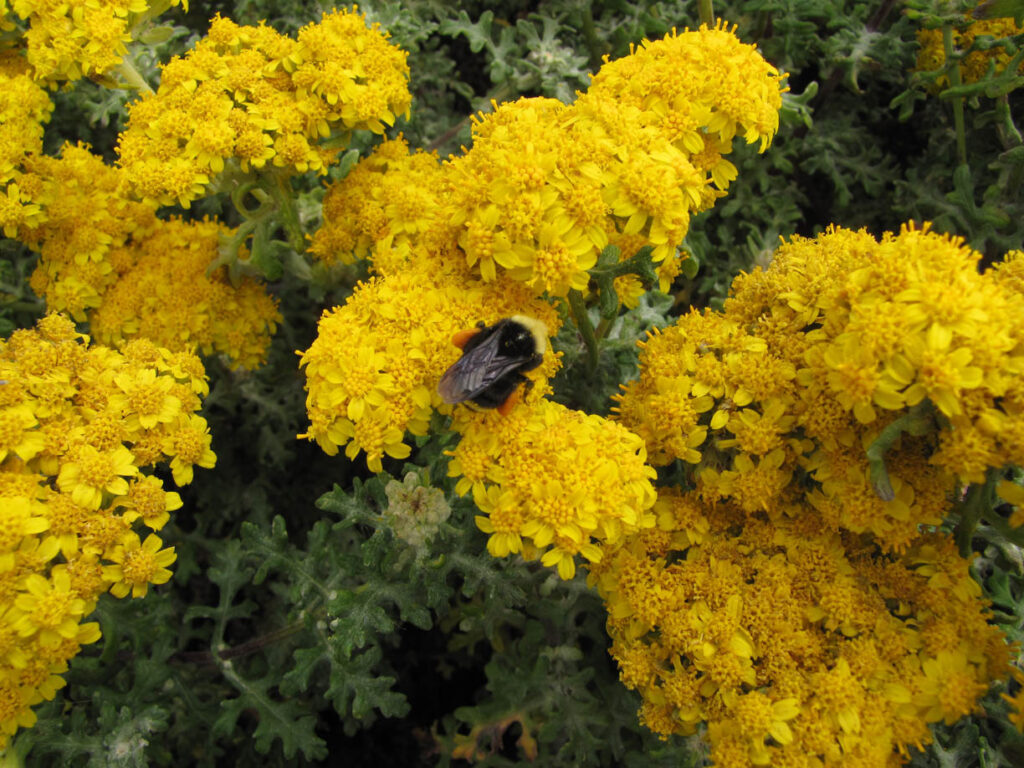
This western U.S. native is often distinguished by its fine, woolly foliage and white or pink-tinged blooms. It is highly drought-tolerant and thrives in prairie and grassland ecosystems.
These subspecies showcase the adaptability and diversity of Achillea millefolium, making it a versatile choice for gardens in various climates.
Whether used as a pollinator-friendly border plant, a drought-resistant ground cover, or a natural meadow filler, yarrow remains one of the most reliable and beneficial perennials to grow.
When to Start Growing Yarrow from Seed
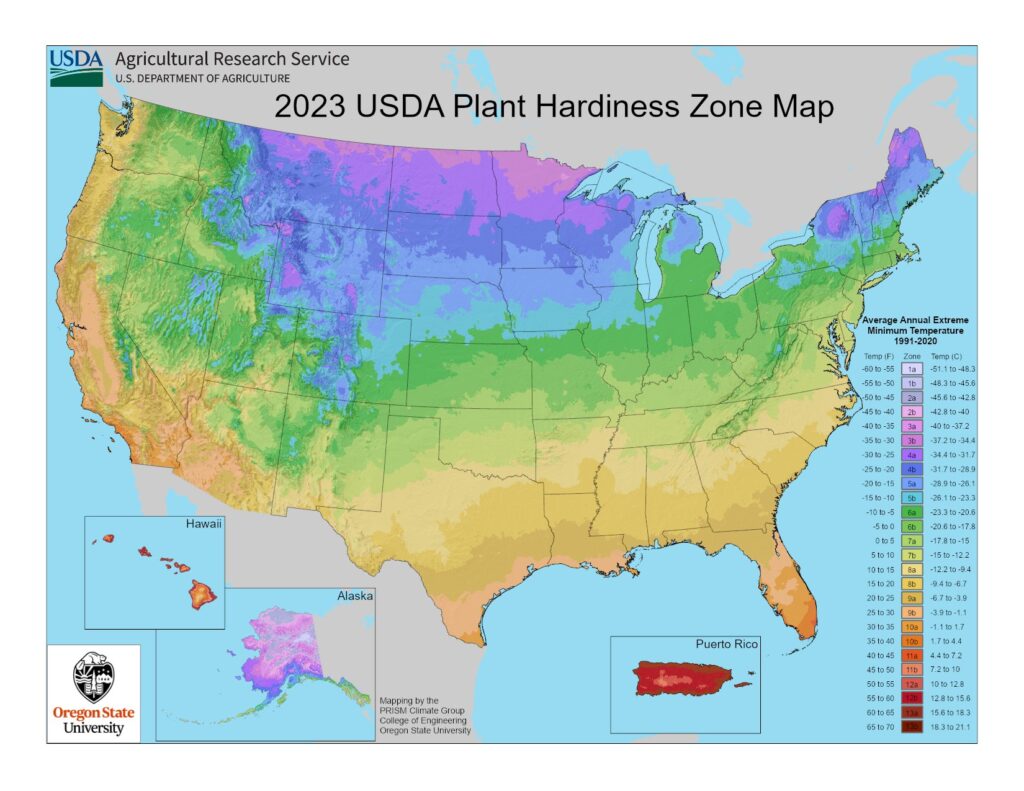
Yarrow is a resilient perennial that can be started from seed either indoors or directly in the garden, depending on your climate. Timing is key for successful germination and establishment. Yarrow grows best when started in early spring or late fall, as cooler temperatures improve germination rates.
Cool Climates – Zones 3-5
In colder climates, start yarrow seeds indoors 6-8 weeks before the last expected frost. This gives seedlings a head start before transplanting in spring. Direct sowing is best done in early spring as soon as the soil is workable or in late fall for natural stratification.
Moderate Climates – Zones 6-8
For mild climates, yarrow can be started indoors 6-8 weeks before the last frost or directly sown in spring after the danger of frost has passed. It can also be sown in fall to take advantage of winter moisture.
Warm Climates – Zones 9-12
In warm climates, yarrow seeds should be sown outdoors in fall to allow for natural cool stratification. If starting indoors, sow seeds in late fall or early winter and transplant when temperatures cool in early spring.
Yarrow Seed Preparation
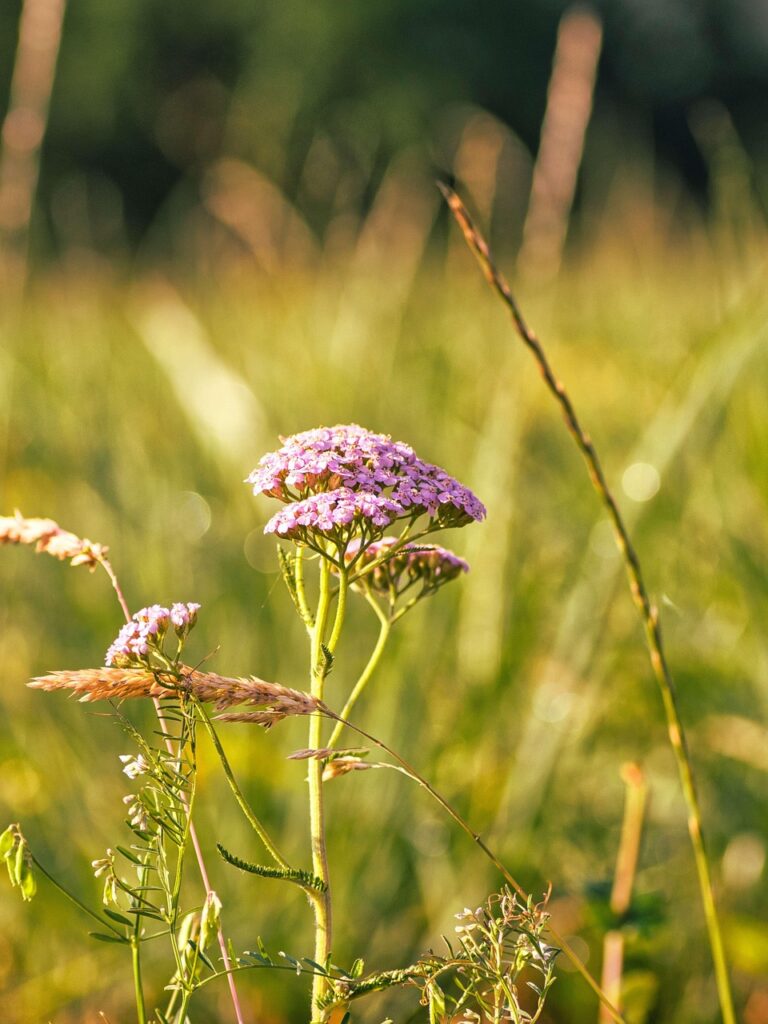
Yarrow seeds benefit from cold stratification, which improves germination rates, especially in warmer climates where natural cold exposure is lacking.
Cold Stratification
Cold stratification is recommended but not required. Without stratification, germination rates may be as low as 30-40%, while stratified seeds can reach 70-80% germination. To cold stratify yarrow seeds:
- Moisten a paper towel or mix seeds with slightly damp sand.
- Place the seeds in a sealed container or plastic bag and refrigerate for 2-4 weeks.
- Check for mold periodically and lightly mist if the medium dries out.
- After stratification, sow seeds directly in the garden or in seed trays.
Preparing the Garden Bed for Growing Yarrow
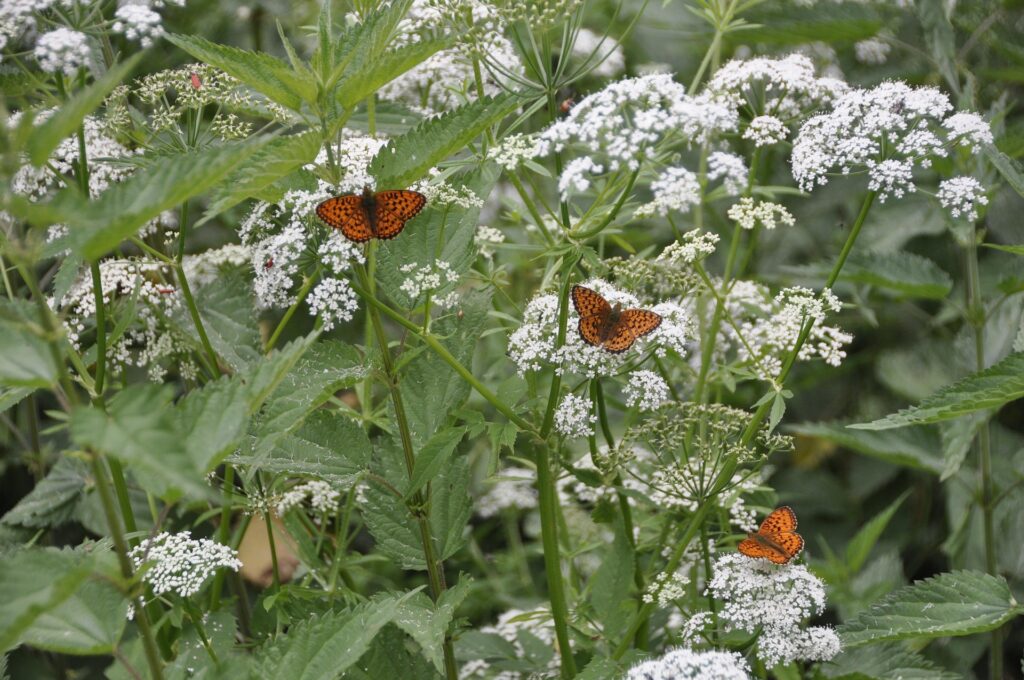
Yarrow thrives in well-prepared garden beds that mimic its natural habitat. As a hardy perennial, it requires minimal soil amendments but benefits from thoughtful site selection. Proper preparation ensures healthy growth, prolific blooms, and long-term success in the garden.
Choosing a Location for Growing Yarrow
Select a site with good air circulation and plenty of space for spreading. Yarrow is an aggressive grower that can spread through rhizomes, so choose an area where it won’t compete with more delicate plants. It grows well in wildflower meadows, pollinator gardens, and borders.
Light Requirements
Yarrow thrives in full sun, needing at least six to eight hours of direct sunlight per day. In partial shade, plants may become leggy and produce fewer blooms. For best results, plant in an area with unobstructed sunlight throughout the day.
Moisture Requirements for Growing Yarrow
Once established, yarrow is highly drought-tolerant and prefers dry to moderately moist conditions. However, newly planted seeds and young seedlings require consistent moisture to germinate and develop strong roots. Avoid overwatering, as yarrow does not tolerate soggy or compacted soil.
Soil Type Preferred, Including Organic Matter and pH
Yarrow thrives in well-draining soil and can tolerate poor, sandy, or rocky conditions. It does best in loamy or sandy loam soil with moderate organic matter. Avoid overly rich or fertilized soil, as excessive nutrients can lead to weak, floppy growth. The ideal pH range is 6.0 to 7.0, though yarrow can tolerate slightly more acidic or alkaline conditions.
To improve drainage in heavy clay soils, amend with sand or fine gravel. If the soil is too nutrient-rich, mix in a small amount of compost but avoid high-nitrogen fertilizers.
Direct Sowing Yarrow Seeds
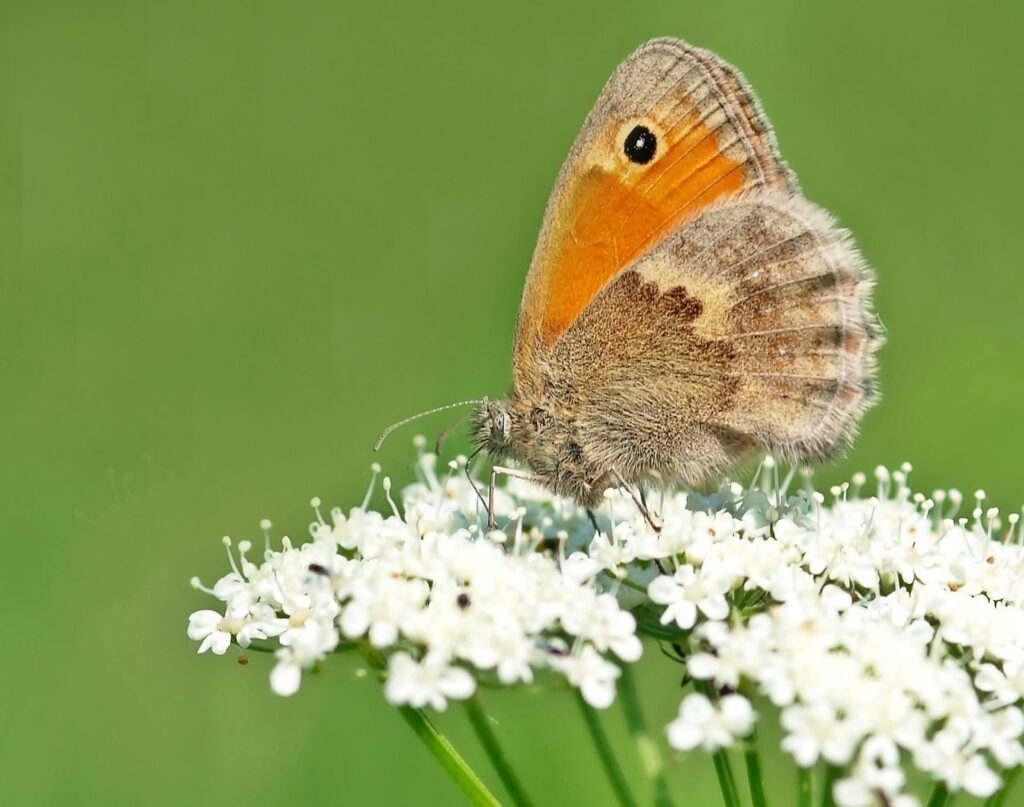
Direct sowing yarrow seeds is a simple and effective way to establish plants in the garden. Since yarrow thrives in various conditions, sowing seeds directly in well-prepared soil ensures a natural, resilient start. This method works best in spring after the danger of frost has passed or in fall for natural stratification over winter.
Depth to Plant
Yarrow seeds are very small and require only a light covering of soil. Scatter the seeds on the surface and gently press them into the soil. Avoid burying them deeply, as they need light to germinate.
Moisture Requirement for Growing Yarrow from Seed
Keep the soil evenly moist but not soggy until germination occurs. A fine mist or gentle watering helps prevent washing away the tiny seeds. Once seedlings emerge, gradually reduce watering to encourage deep root growth.
Optimal Temperature for Germination
Yarrow seeds germinate best in temperatures between 65°F and 75°F. In cooler weather, germination may take longer, while excessively high temperatures can dry out the soil too quickly.
Light Requirements for Germination
Yarrow seeds require light to germinate. Sow them on the soil surface and avoid covering them with soil. A thin layer of fine sand or vermiculite can help retain moisture without blocking light.
Time to Germination
Under ideal conditions, yarrow seeds typically germinate within 14 to 21 days. Cooler temperatures or inconsistent moisture may slow the process.
Growing Yarrow from Seeds Indoors

Yarrow can be successfully started indoors, providing an early jumpstart on the growing season. Starting seeds indoors gives plants time to grow strong before being transplanted outdoors. It is important to start them early enough to allow for acclimatization before planting outside.
Seed Starting Mix
Yarrow seeds require a well-draining, light seed-starting mix. You can buy a pre-made mix, or make your own by combining equal parts peat moss, perlite, and vermiculite. This mixture will ensure that the seeds receive the necessary air circulation and moisture for optimal germination without becoming waterlogged.
Containers for Growing Yarrow Seeds
Yarrow can be started in small cell trays, soil blocks, or pots. Choose containers that are 2-3 inches deep to allow the seedlings enough room to grow.
Avoid using containers that are too large, as they may retain excess moisture and lead to root rot. Ensure the containers have drainage holes to prevent water from accumulating at the bottom.
Depth to Plant
Yarrow seeds are very small and should not be covered deeply. Scatter the seeds evenly over the surface of the soil, then gently press them down with a flat tool or your hands. They need light to germinate, so avoid burying them beneath the soil.
Moisture Requirement for Seeds
Keep the seed starting mix moist but not soggy. Light misting is ideal to prevent disturbing the tiny seeds. You can also bottom water the seed trays.
After planting, place the containers in a warm, bright location or under grow lights to promote germination. Once the seeds have sprouted, gradually reduce the moisture to encourage healthy root growth.
Optimal Temperature for Germination
Yarrow seeds germinate best in temperatures between 65°F and 75°F. Maintain a consistent temperature to help the seeds germinate more reliably. A temperature range outside of this may delay germination or reduce seedling success.
Light Requirements for Germination
Yarrow seeds need light to germinate. Ensure that the containers are placed in a bright location with at least 12-16 hours of light each day, or use grow lights. The light helps stimulate seedling growth, and a lack of it can result in weak, spindly plants.
Time to Germination
Yarrow seeds typically germinate within 14 to 21 days, though this can vary depending on conditions such as temperature and moisture. Ensure that the seedlings have adequate light and warmth to speed up the process.
When to Plant Out Yarrow Plants
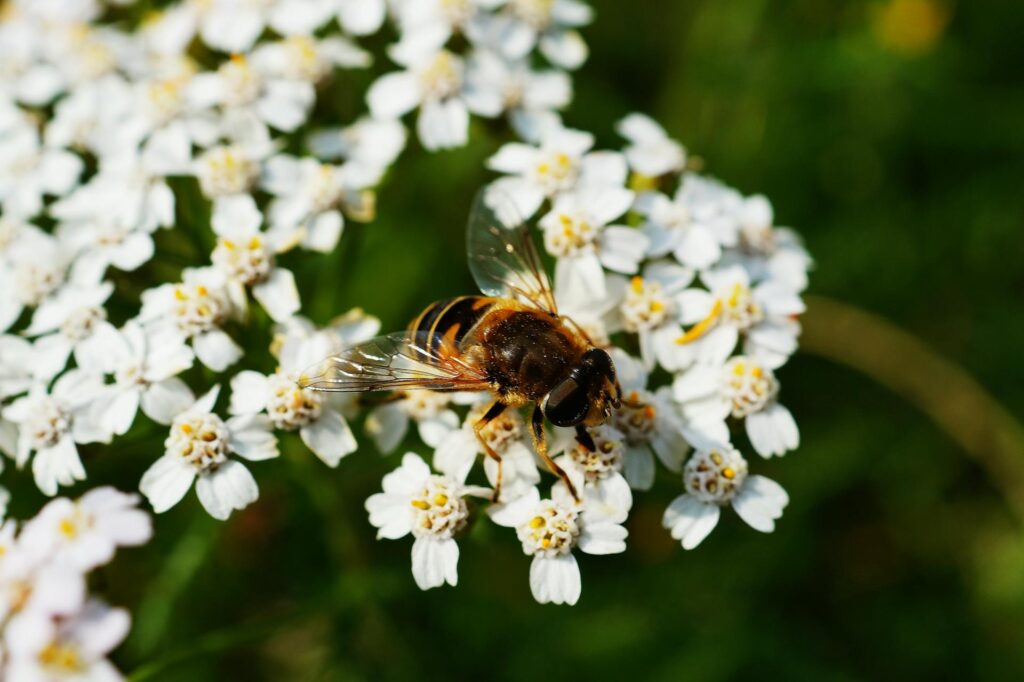
Yarrow plants are ready to be transplanted outdoors once they have developed strong, healthy roots and have grown several sets of leaves. This typically occurs 4-6 weeks after starting seeds indoors. Make sure to plant them after the last frost date in your area to avoid cold damage. If you’re in a warmer climate, ensure nighttime temperatures are consistently above 50°F before planting out.
Hardening Off Yarrow
Before transplanting yarrow into the garden, it’s important to harden them off. Gradually introduce the plants to outdoor conditions by placing them outside in a shaded, sheltered spot for 1-2 hours a day, slowly increasing the time spent outdoors over 7-10 days. This acclimates the plants to the wind, sun, and fluctuating temperatures, reducing transplant shock.
Planting Out Yarrow
To plant yarrow in the garden, choose a location with full sun. Dig a hole deep enough to accommodate the root ball, usually around 2-3 inches deep. Space plants about 12-18 inches apart to allow for growth and good air circulation. After planting, apply a thin layer of mulch around the base to help retain moisture and suppress weeds. Water well after planting and keep the soil moist, but not soggy, for the first few weeks to encourage strong root establishment.
Caring for Your Growing Yarrow Plants
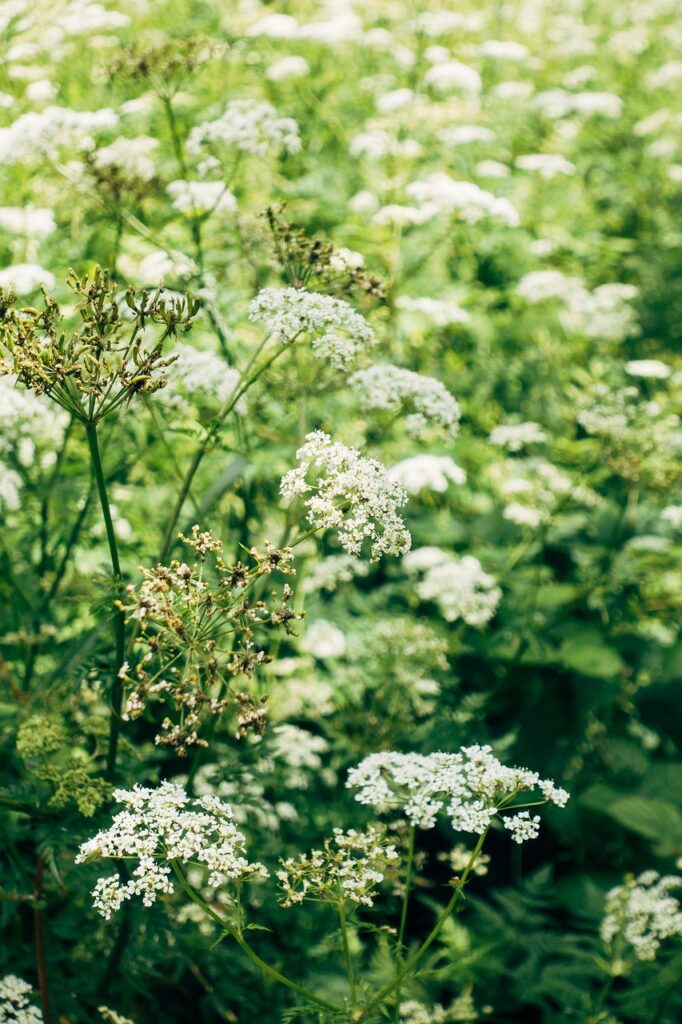
Yarrow plants are relatively low-maintenance once established but do benefit from ongoing care to ensure healthy growth and vibrant blooms.
Watering
Yarrow plants are drought-tolerant and prefer well-drained soil, so avoid overwatering. Water deeply during dry spells, but let the soil dry out between waterings. Too much moisture can lead to root rot.
Feeding
Yarrow generally does not require heavy fertilization. You can apply a balanced, slow-release fertilizer or layer of compost in the spring if your soil is poor, but it thrives in lean soil. Over-fertilizing may lead to weak growth and fewer flowers.
Weeding
Keep the area around yarrow plants free from weeds, especially during the early growth stages. Mulch can help reduce weed growth, but be sure not to pile it too high around the base of the plant, as this can cause rot.
Pest Control
Yarrow is relatively pest-resistant, but it can sometimes attract aphids or spider mites. If pests become a problem, try spraying the plants with a jet of water to remove them, or use insecticidal soap for larger infestations. Avoid harsh chemicals to protect pollinators and beneficial insects.
Tips and Tricks for Growing Yarrow
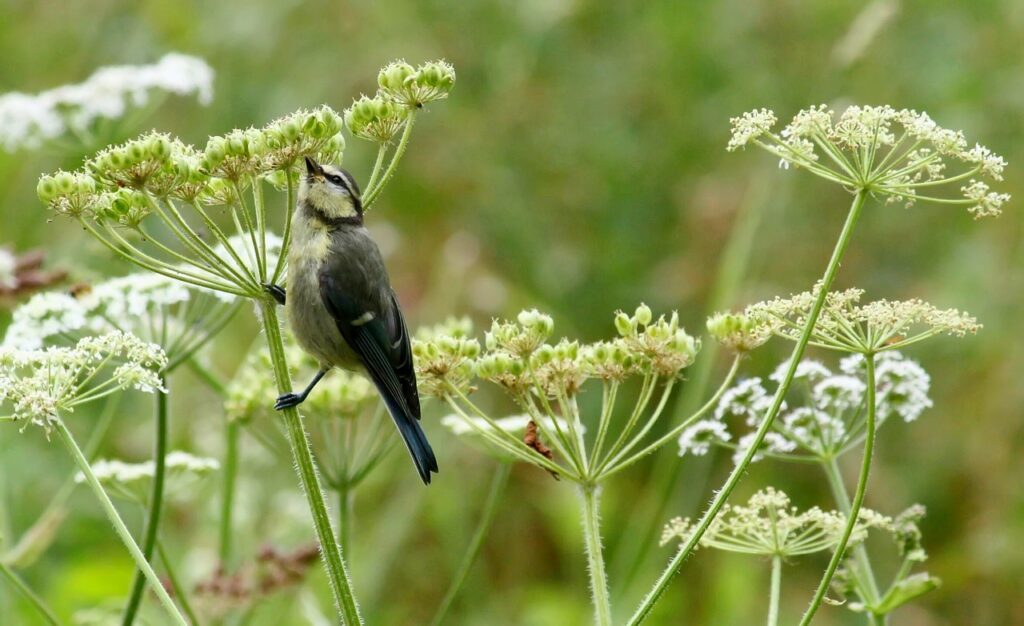
Yarrow plants are quite resilient, but there are a few practices that can help them thrive even more in your garden.
Pinching Back
Yarrow does not require pinching back, but you can prune or cut back the plants after their first bloom to encourage more compact growth and a second round of flowers. Deadheading spent blooms can also help the plant focus energy on new growth rather than seed production.
Encourage Self-Seeding
If you want to encourage your yarrow to self-seed, simply leave some flowers on the plant to go to seed. They will often reseed themselves naturally in the garden.
Cut Back in Fall
In regions with cold winters, cutting yarrow back to the ground in late fall or early spring can help prevent disease and promote fresh growth.
Dividing Plants
Yarrow plants tend to grow vigorously and may become crowded after a few years. Dividing the plants every 2-3 years can help maintain their health and size. This is best done in early spring or fall.
Popular Cultivated Varieties of Yarrow

Several cultivated varieties of yarrow, both from Achillea millefolium and Achillea filipendulina, are commonly found in seed catalogs, offering a variety of colors and growth habits for garden settings.
Cerise Queen
This variety features vibrant, deep pink-red flowers that add a bold splash of color to any garden. It has a compact growth habit, making it ideal for smaller spaces.
Moonshine
Known for its bright, soft yellow flowers, ‘Moonshine’ boasts a dense, upright form that is perfect for sunny borders. It’s a particularly striking variety with silvery foliage.
New Vintage Red
This variety offers rich, dark red flowers and a tidy, clumping growth habit. It’s a beautiful choice for creating contrast in floral arrangements and garden designs.
White Beauty
As the name suggests, this variety has pure white flowers with a soft, delicate appearance. It grows in a compact, well-branching form and works well as a neutral addition to any flower bed.
Terracotta
Offering a unique burnt orange color, ‘Terracotta’ has a warm and earthy tone that blends beautifully with other perennial flowers. It grows in a sturdy, bushy shape and attracts butterflies.
The Pearl
This cultivar produces elegant white blooms with a hint of pale pink in the center. It’s a versatile variety that performs well in both formal and cottage-style gardens, with a moderate growth rate.
These cultivated varieties offer different color palettes and growth characteristics, allowing gardeners to choose the right type of yarrow for their landscape designs and floral displays.
Growing Yarrow for Cut Flowers

Yarrow is an excellent choice for cut flowers, thanks to its long-lasting blooms and vibrant colors. The flowers, which can range from soft pastels to bright hues like yellow, pink, and red, are great for adding texture and color to floral arrangements.
Yarrow’s sturdy stems and wide flower heads make it a popular addition to bouquets, particularly for rustic, wildflower-inspired displays. It also works well in dried arrangements, as its blossoms hold their shape and color after drying.
To harvest yarrow for cut flowers, it’s best to cut the stems when the flowers are fully open but before they begin to fade. This is typically in the morning, when the plants are hydrated and the flowers are at their freshest.
Use sharp scissors or pruning shears to cut the stems at an angle, leaving some length to the stem so they can absorb water efficiently. Once harvested, yarrow typically lasts around 5-7 days in a vase, depending on the conditions. For longer-lasting blooms, you can change the water regularly and trim the stems every few days.
When and How Long Does Yarrow Bloom?
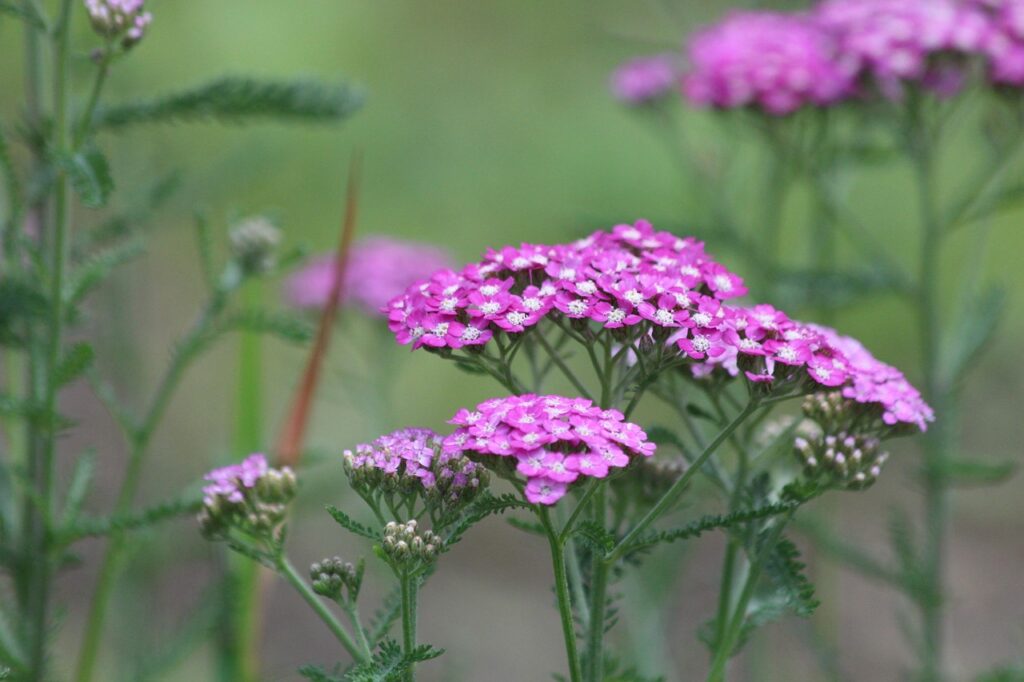
Yarrow (Achillea millefolium) typically blooms from early to mid-summer, with flowers lasting through to early fall, depending on the climate and growing conditions. After flowering, the plant may continue to produce smaller blooms, but the larger flower heads will begin to fade.
In cooler climates, yarrow plants are perennial and will die back in the winter. However, in USDA hardiness zones 3-8, they will regrow in the spring from their roots and spread through self-seeding. Yarrow is known for its ability to self-sow, meaning it often reseeds itself and will produce new plants in the next growing season.
While yarrow plants may die back in winter, they still serve an important purpose in the colder months. The seed heads remain intact and provide food for various birds, especially during lean winter months.
Additionally, the dried foliage can offer shelter for beneficial insects and small wildlife, which may seek refuge under the dead plant material. In the spring, yarrow’s new growth can help maintain soil structure and contribute to soil health, making it a valuable plant in the garden year-round.
Species That Benefit from Growing Yarrow
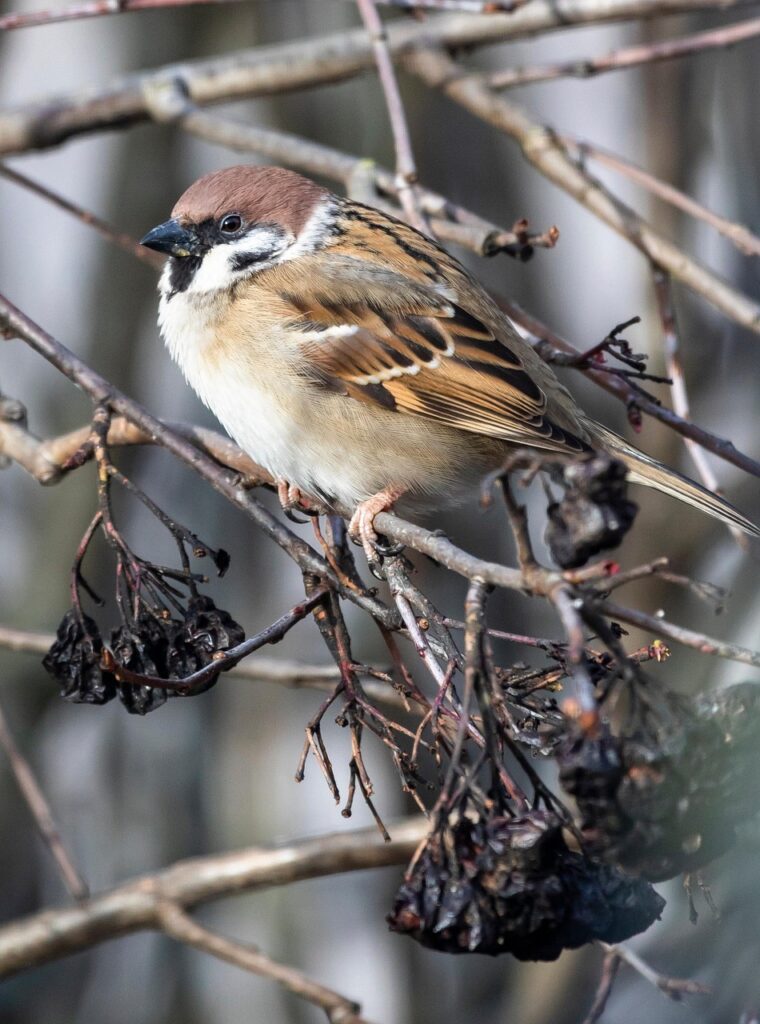
- American Goldfinch (Spinus tristis): They feed on yarrow’s seeds during the winter months.
- Common Yellow Swallowtail (Papilio machaon): The larvae feed on yarrow and other plants in the same family.
- Honeybees (Apis mellifera): Yarrow is a great source of nectar for bees, especially during the summer bloom.
- Cabbage White Butterfly (Pieris rapae): Its larvae feed on yarrow leaves.
These species rely on yarrow for various reasons, from feeding on its seeds to using it as a food source for larvae, or even using it for shelter. This makes yarrow a beneficial plant for supporting wildlife in the garden, particularly during the colder months.
Growing More Yarrow Plants with Propagation
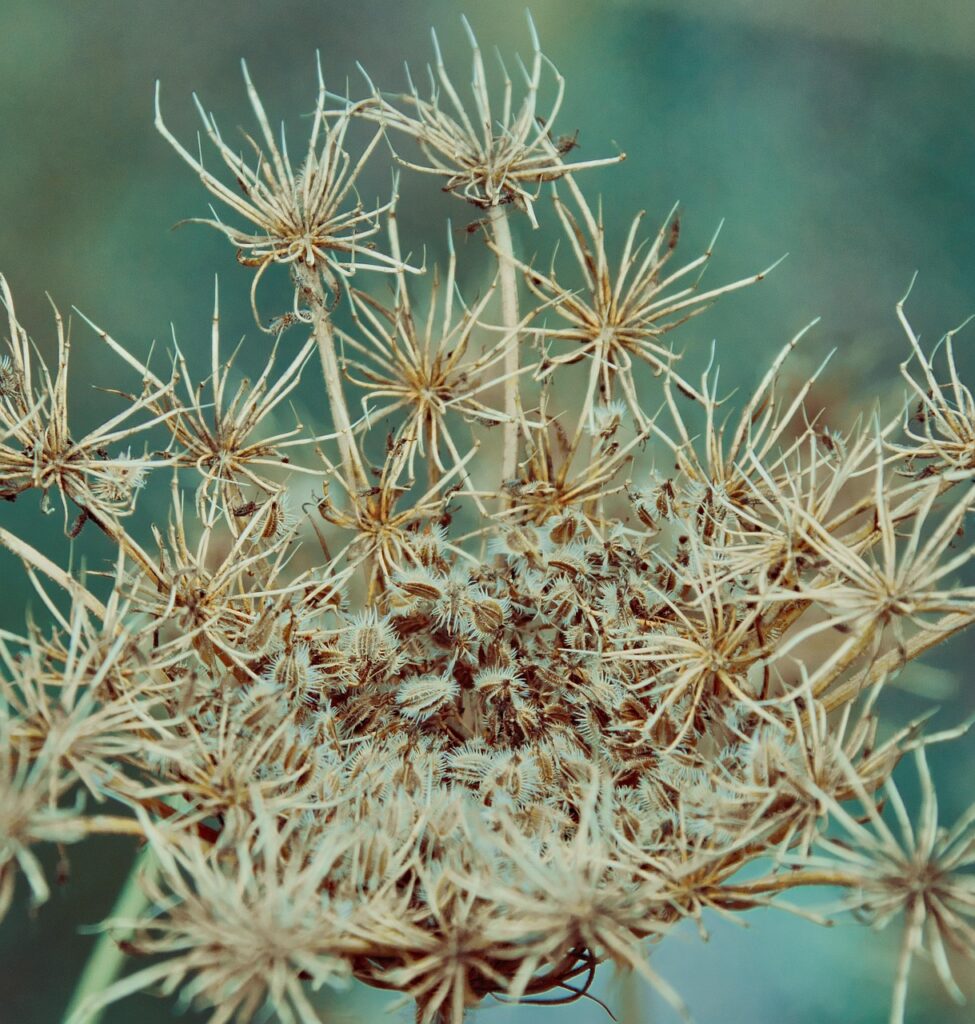
Yarrow can be propagated both by seed and by division.
Collecting Yarrow Seeds
To harvest yarrow seeds, wait until the flowers have completely dried on the plant. This typically happens in late summer or early fall. Once the seed heads are fully dried, carefully cut them from the stem, making sure not to disturb the plant too much if you want it to continue reseeding naturally.
Place the seed heads in a paper bag or on a drying tray to finish drying for another week or two. After drying, gently rub the seed heads to release the seeds. Once collected, store the seeds in a cool, dry place in an airtight container. Be sure to label the container with the plant’s name and the date of collection to keep track of freshness.
Dividing Yarrow for Propagation
Division is an effective way for growing yarrow from existing plants. Perform this in early spring or late fall when the plant is dormant. To divide yarrow, carefully dig up the clump of roots and separate them into smaller sections using a sharp knife or garden tool.
Each division should have a healthy portion of roots and shoots to ensure the new plant can establish itself. After dividing, replant each section in a well-prepared garden bed, spacing them out appropriately to allow for healthy growth.
Make sure the divisions are planted at the same depth they were in the original clump to prevent damage to the roots. Water the new plants well after planting, and keep the soil consistently moist as they establish themselves.
Time for Growing Yarrow in Your Garden
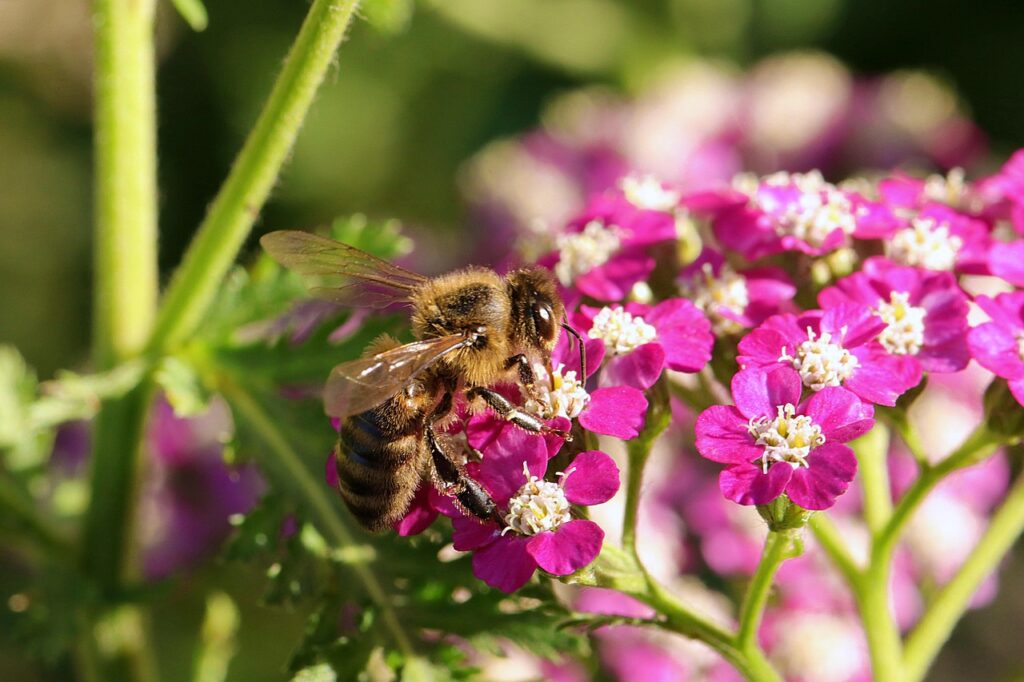
Yarrow is a versatile, hardy plant that adds beauty and benefits to any garden. With its stunning range of colors, easy care, and resilience in both sunny gardens and wildflower meadows, yarrow is a perfect choice for gardeners looking to create a low-maintenance, butterfly-friendly landscape.
Whether you’re planting it for its medicinal uses, aesthetic appeal, or to attract pollinators, yarrow is sure to thrive and make a lasting impression in your garden.
So, get ready to start your yarrow seeds, prepare your garden bed, and enjoy this wonderful perennial that will not only brighten your garden but also support a variety of beneficial species.
Plant your yarrow today and watch it bloom into a beautiful, hardy addition to your landscape!
Last update on 2025-08-07 / Affiliate links / Images from Amazon Product Advertising API
This product presentation was made with AAWP plugin.




